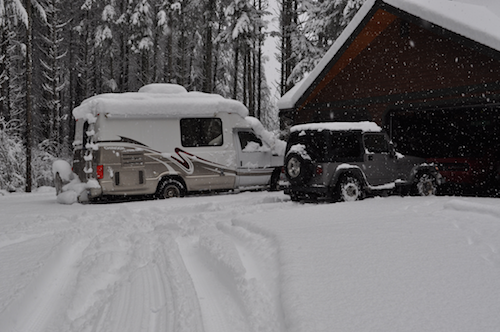I don't know, but even if the Battleborn lithium batteries are okay with the alternator, I don't think it would charge them very quickly. I first got my B2B because on my first long drive in my Concourse after buying it, it took something over 12 hours to fully charge my two lead acid house batteries (which weren't that low). When I switched to a B2B, from that same level of depletion it charged them up in maybe 2-3 hours. Besides giving the batteries the charging cycle and voltage levels they need, the B2B also basically tricks the alternator into giving it more current for the house batteries. So even though my house lead acid had the same basic charging voltages as the engine battery, they were now being given more current and kept in the stage they needed to be in for best charging, even if the engine battery had the alternator giving it just 13.6V or 13.8V because it was full. It does this, for example, by acting to the alternator as if 13.6V is a voltage level that it can suck up at 25 amps, then converting that into maybe 14.6V to give the house lead acid maybe 18 amps (it raises the voltage, which lowers the current available to pass through a bit, and also has lost overhead in raising the voltage, e.g the B2B gets hot).Claude wrote: ↑July 31st, 2022, 2:43 pm 1) The dead separator under the hood is a Surepower 1315 which is bi-directional. With my situation, I am thinking all I need is a unidirectional replacement. I seriously doubt I'll ever be needing/wanting to start my engine from the house battery (although you never know) What would you recommend? And if I do install a battery separator, should I add a DC-DC charger to avoid any potential problems with the lithium battery?
Short answer: If the overhead switches are disconnected, then I'd guess the LVD is only ensuring that no more than 50 amps are coming through from the batteries to the distribution panel.Claude wrote: ↑July 31st, 2022, 2:43 pm 2) Behind the drivers seat is a Surepower 135001 LVD. I found the thread about bypassing or removing the LVD. I'm not sure what the LVD is doing for me at this point. Do you think I should be removing the unit or just leave well enough alone? (no harm, no foul)
Details: Assuming the Victron Multiplus inverter you mention is the 2000 or something, it must be close to the batteries on a much larger wire than goes through the LVD? So that and the MPPT 100/50 must have their own wires direct to the house battery (with large fuses, hopefully!). Then the LVD is still probably being used for the distribution panel. That is assuming the wiring inside the coach was not messed with too much, and the main battery supply is still going through that wire to the panel - is there still a relatively thick red wire (I think it was a #8, though it might have been a #4, I can't remember) going though the LVD?
